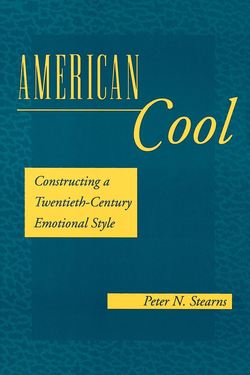Читать книгу American Cool - Peter N. Stearns - Страница 14
На сайте Литреса книга снята с продажи.
Victorian Intensity
ОглавлениеNo single work, either expert or popular, conveniently summed up Victorian emotional culture. In examining the real though complex consistency of the amalgam that emerged after 1850, we are piecing together a wholeness that the Victorians themselves did not explicitly encounter. One result of the patchwork approach to popular presentations of Victorian emotional style was, inevitably, a host of inconsistencies. For example, men as well as women were urged to have intense emotions, and yet Victorian statements could imply that male superiority rested directly in the ability to control and suppress emotions. This inconsistency doubtless reflected some genuine ambiguity about how to defend gender goals in the emotional arena. Anachronistic standards also continued to intrude, including an occasional epitaph or story designed to discipline children through fear of untimely demise.
Nevertheless, once the transition away from the simpler emotional view of the early Victorians was complete, advice literature, mainstream Protestant sermons, and moralistic popular fiction presented a fairly uniform picture about anger, fear, jealousy, grief, and love. There were no clear dissenting voices in the most widely read directives. An evangelical segment, to be sure, maintained a somewhat more traditional view of discipline through fear as part of their religious stance. Utopian communities also dissented, though less directly. In arguing for cooperativeness instead of competition, they did not adopt the mature Victorian idea of channeled anger. Nor did they countenance intense love as a means of joining a couple (and therefore emotionally isolating it from the community). On the other hand, they actually intensified the new view of jealousy in arguing against possessiveness, including sexual possessiveness.53 These subcultures, both of which related to the mainstream middle class, must not be forgotten.
Nor, of course, should the class base of the dominant Victorian emotional style be lost from sight. Popularizers intended their wares for all readers, but there is no question that their emphasis was class based. As we will see in the following chapter, evidence suggests that many Victorians translated their emotional culture into assumptions that lower classes and immigrants were incapable of the finer feelings it embodied. Victorian emotional style became part of a cultural arsenal that allowed middle-class publicists both to preach at the lower classes, confident of the superiority of their emotional standards, and also to condemn them for failing to live up to the necessary control or to express the ethereal qualities of true love. While the Victorian style did not address alternative norms, which testifies both to substantial middleclass agreement on goals and to the dominant cultural position of the middle class, there is no reason to assume that it displaced various working-class and ethnic alternatives or that the Victorians really expected it to do so. The history of ethnic and lower-class emotionologies, immensely desirable, has yet to be written, though some material on expressions of parental and romantic love warns us not to expect total differentiation.54
At any rate, a surprisingly coherent emotional culture was purveyed to the middle class during the second half or two-thirds of the nineteenth century. The culture had two main foci: the need for control, for directing emotional fervor to appropriate ends; but also the need for intensity, for the spark necessary to a full life and to the functions essential in modern society. Emotional excess was obviously condemned, but so was emotional flaccidity. The Victorians sought, as basic ingredients of good character, the capacity for deep feeling along with the capacity to direct that feeling to appropriate targets.
